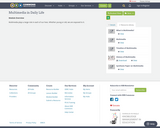
Multimedia plays a large role in each of our lives. Whether young or old, we are exposed to it.
- Subject:
- Technology
- Material Type:
- Module
- Author:
- kathy robin
- Date Added:
- 07/16/2016

Multimedia plays a large role in each of our lives. Whether young or old, we are exposed to it.
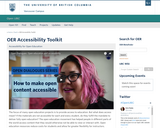
The focus of many open education projects is to provide access to education. But what does access mean? If the materials are not accessible for each and every student, do they fulfill the mandate to deliver fully open education? The open education movement has helped people in different parts of the world access content that they would otherwise not be able to view or interact with. Open education resources reduce costs for students and allow for greater flexibility for instructors. Accessibility can help push the movement even further forward.
The goal of the OER Accessibility Toolkit is to provide the needed resources needed to each content creator, instructor, instructional designer, educational technologist, librarian, administrator, and teaching assistant to create a truly open and accessible educational resource — one that is accessible for all students.
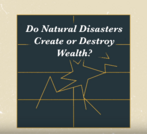
Paradoxically, while natural disasters clearly destroy wealth, they also seem to create wealth and employment when the damages are repaired. But 19th century French economist Frédéric Bastiat argued that this idea is a fallacy and fails to take opportunity costs into account. In this video, philosophy professor Dan Russell of the University of Arizona defines opportunity costs and explains the importance of Bastiat’s realization on contemporary economics.

A second-year intermediate course that includes vocabulary enhancement and limited review of selected points of grammar. Focuses on listening comprehension and speaking, with group activities, discussions and individual oral reports based on readings, films, music and art.
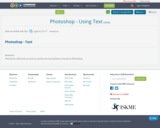
This lesson will teach you how to use the text tool and how to format in Photoshop.

What do plants eat? This unit explores plants and how they make food.
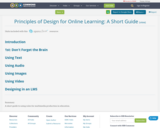
A short guide to using rules for multimedia production in education.
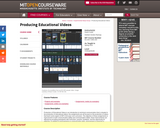
Production of Educational Videos is an introduction to technical communication that is situated in the production of educational videos; the assignments are all focused on the production of videos that teach some aspect of MIT’s first-year core curriculum. The objective of these assignments is improvement in both communication ability and communication habits; these improvements are effected by providing participants with instruction, practice, feedback, and the opportunity for reflection. In addition to improvements in communication skills, improvement is expected in students’ attitude towards writing, oral presentations, and collaboration; as the semester progresses, students should feel confident of their ability to write, present, and collaborate.

Production of Educational Videos is an introduction to technical communication that is situated in the production of educational videos; the assignments are all focused on the production of videos that teach some aspect of MIT’s first-year core curriculum. The objective of these assignments is improvement in both communication ability and communication habits; these improvements are effected by providing participants with instruction, practice, feedback, and the opportunity for reflection. In addition to improvements in communication skills, improvement is expected in students’ attitude towards writing, oral presentations, and collaboration; as the semester progresses, students should feel confident of their ability to write, present, and collaborate.
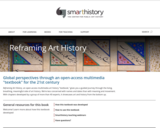
Reframing Art History, an open-access multimedia world art history "textbook," gives you a guided journey through the living, breathing, meaningful side of art history. We’re less concerned with names and dates than with meaning and movement. With chapters developed by a group of more than 40 experts, it showcases art and history from the bottom up.

This article provides an overview of educational resources available from polar research programs.
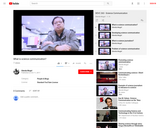
In the Philippines, the AM radio is still an influential medium. Bringing science and technology to a broad spectrum of listeners is not just refreshing. It’s an innovation in an industry that prizes celebrity and hustle.
Angelo B. Palmones brought sense and reason to AM listenership through “Bago ‘Yan Ah!”, science-oriented program in one of the top AM stations in the country. But his commitment to wider S&T public awareness does not start and stop with the multi-awarded Sunday program.
Palmones initiated and supported many environment protection and science education programs. He has conceptualized “Bantay Kalikasan Hotline,” a media watch against raiders of the environment. He has organized “Invent Clubs” in several provinces to encourage creativity among students and out-of-school youth. He is also deeply involved in science-related activities in campuses and among student and teacher organizations.
A unique “Fisheries School on Air” program that he hosts, now on seventh year, has 90 alumni so far who are into tilapia, seabass, and crab cultures.
Born on August 8, 1966 in Kidapawan, Cotabato, Palmones earned his Bachelor of Science in Commerce at Notre Dame College of Kidapawan [1987], and took up law subjects at the Far Eastern University. He also went to the Asian Institute of Management for an executive development program [1999].
He is also co-founder and current president of the Philippine Science Journalists Association, Inc., and regular member of the National Press Club, and Kapisanan ng mga Brodkaster sa Pilipinas.
Among his numerous awards are DOST Media Award Hall of Fame [winner in 1998, 1999, 2000], Best Newscaster-12th KBP Golden Dove Awards [2002] and 13th KBP Golden Dove Awards [2004].
Source: Science and Technology Post (A Publication of the Department of Science and Technology)
Former AGHAM Partylist Representative
Team Member at AGHAM Partylist
Region III - Central Luzon, Philippines
Nonprofit Organization Management
AGHAM or Alyansa ng mga Grupong Haligi ng Agham at Teknolohiya para sa Mamamayan is a non-stock, non-profit association of science professionals, science journalists, advocates and enthusiasts. Organized in 2005, it aims to 1) promote science education and the development of the culture of science of the Filipinos ; 2) advocate national policies and programs that will advance science and technology for sustainable development of the country; 3) assist and support Filipino science workers engaged in research and development, in invention and popularization of technologies and products; and 4) promote the welfare and well-being of Filipino science and technology workers and the sustainability of science-based institutions, organizations and enterprises.
Source: https://ph.linkedin.com/in/angelo-palmones-27a220110
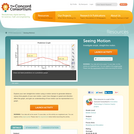
Explore your own straight-line motion using a motion sensor to generate distance versus time graphs of your own motion. Learn how changes in speed and direction affect the graph, and gain an understanding of how motion can be represented on a graph.

This class deals with interactive art. Visiting artists will discuss their work from a theoretical and practical perspective. Discussions of the history of interactive digital art and contemporary issues in the field will take place. Students will develop an interactive art project for a final exhibition or submit a short paper.
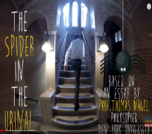
This thought experiment, based on an essay by Professor Thomas Nagel, Philosopher at New York University, encourages students to question the morality of intervention. Professor Nagel attempted to liberate a spider he found living in a urinal from it is seemingly terrible living situation, only to find it dead the next day. Wracked with guilt, he began to question his decision. Should he have moved the spider? What would you have done?

This module explores modern day apathy, specifically in middle schools. This PBL challenges students to be introspective and reflect onWhat they valueWhat they are concerned withWhat they are passionate aboutand then see how it can be changed.Students collaborate with oneother to discover shared ideas, research their value or issue, and develop a Public Service Announcement (PSA) to communicate what they want to improve. In a culminating activity, students participate in a gallery/exhibition to share their PSAs.Standards:CCSS English Language Arts (Grade 8)Ohio Standards for Technology
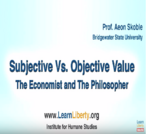
According to Professor Aeon Skoble of Bridgewater State University, the word “value” has very different meanings for economists and philosophers. Economists view value as subjective to reflect individual tastes and preferences. Philosophers, on the other hand, use the term objectively, to refer to concepts such as rights. In this video, Professor Skoble explains how these different conceptions actually compliment each other.
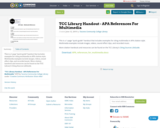
This is a 1-page "quick guide" handout that includes examples for citing multimedia in APA citation style. Multimedia examples include images, videos, sound effect clips, and recorded music. More citation handouts and resources can be found on the TCC Library's Citing Sources LibGuide.
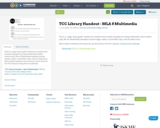
This is a 1-page "quick guide" handout for students that includes examples for citing multimedia in MLA citation style, 8th ed. Multimedia examples include images, videos, sound effect clips, and recorded music. More citation handouts and resources can be found on the TCC Library's Citing Sources LibGuide.
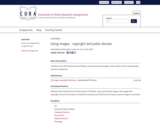
Introduces the ethical dimension of finding, using, and sharing images in the context of the undergraduate research assignment. Students will understand the ethical aspects of finding, using, and sharing images; will engage with copyright issues and concepts of intellectual property; and will find and analyze specific images as examples.